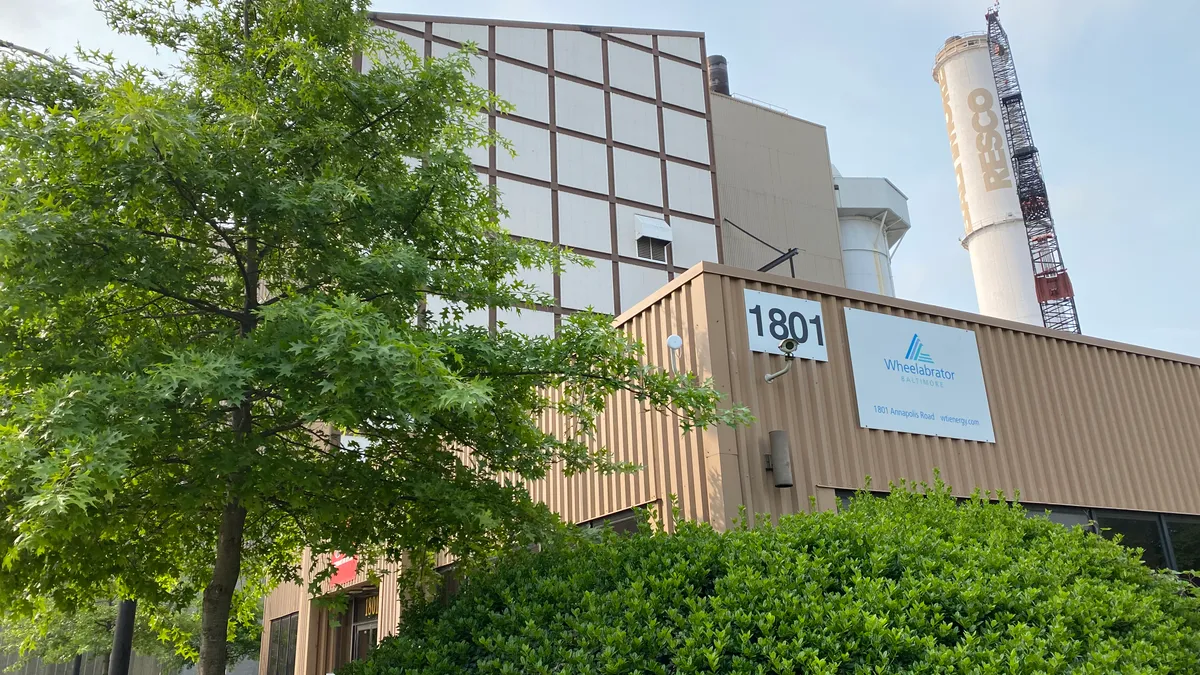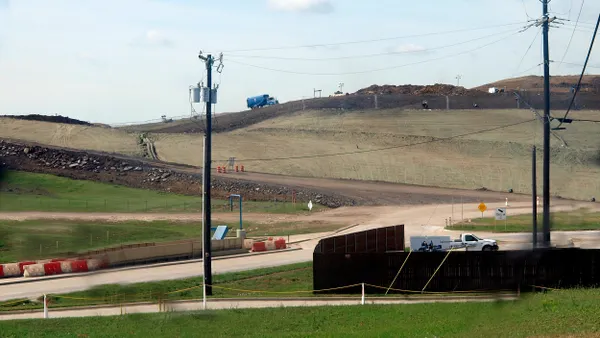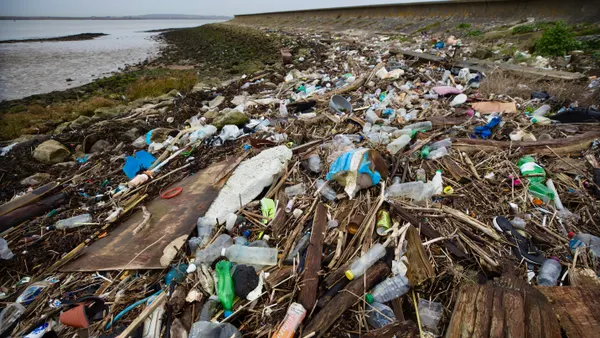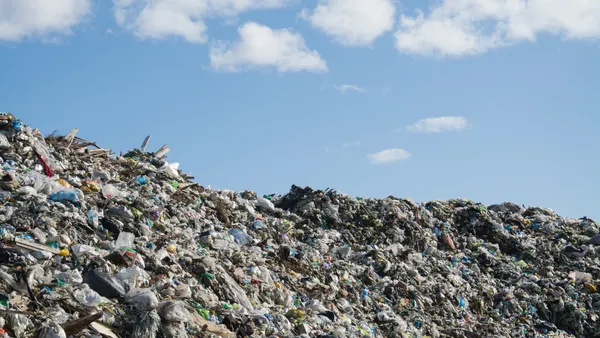Dive Brief:
- The U.S. EPA will investigate a civil rights complaint filed against Baltimore City and its Department of Public Works over their 10-year solid waste management plan. A complaint filed with the federal agency alleged the plan, which anticipated the continued operation of a mass burn combustion facility run by WIN Waste Innovations, disproportionately impacts nearby communities.
- The EPA’s Office of Environmental Justice and External Civil Rights is looking into the case. The office enforces federal civil rights law with entities that receive federal funding, which includes the city and its department.
- The complaint was filed by the Chesapeake Bay Foundation and the Environmental Integrity Project on behalf of the South Baltimore Community Land Trust. The filers allege that the city has abdicated its responsibility to reduce the pollution faced by people in the South Baltimore communities of Cherry Hill, Mt. Winans, Brooklyn, Lakeland, Westport and Curtis Bay, which are predominantly Black and Hispanic.
Dive Insight:
Baltimore City leaders supported the development of a zero waste plan that was published in 2020 and included a goal to divert 90% of materials from “burning or burying” by 2040. That plan was supported by Mayor Brandon Scott, but just before he took office, his predecessor closed a deal with WIN Waste to keep the mass burn facility running into 2031.
The contract renewal was the latest in a decades-long debate about whether the city should move away from incineration. Most recently, the city passed a law that would have enacted strict air pollution controls on the facility, only to have it overturned later in court. The resulting settlement agreement led to the upgrades made by WIN.
Environmental justice advocates in Baltimore have long fought the impacts of the WTE facility, commonly known as BRESCO. Their complaint argues the latest improvements made by WIN are insufficient to address the harms experienced by disadvantaged communities.
“As a lifelong South Baltimore resident and someone who loves my community of Lakeland, I’m thankful for EPA’s action to accept our complaint,” Carlos Sanchez, a youth outreach specialist, said in an emailed statement. “Everyday, we live with the consequences of our city’s ongoing missed opportunity to budget for a just transition to zero waste away from toxic trash incineration. The good news is this is a fixable problem and we are confident that our city leadership, who understand the importance of equity - will step up and do the right thing and begin to treat this environmental justice issue with the urgency it deserves.”
The complaint takes aim at the city’s 10-year solid waste management plan, approved last year. The filers particularly take exception to the document’s outlook on the WTE facility, which reads: “Until there is universal, coordinated adoption of waste diversion practices across public and private sectors, it is likely that the facility will continue to operate at or near its current throughput.”
The complaint argues that this approach “resigns the City to continued reliance on and operation of the BRESCO waste incinerator at its historical rate.” Instead, the filers say, the city should lay out a path to adopt strategies already laid out in the city’s zero waste plan. They note that waste facilities are concentrated in South Baltimore, which has about 70 industrial sources of air pollution. Removing BRESCO, they say, would reduce the overall burden.
WIN Waste has long denied that its facility has a disproportionate impact on South Baltimore, noting emissions from heavy truck traffic also contribute to the air quality of the area. The company says its facility helps Baltimore manage its waste safely and operates “well below strict federal and state emissions limits that safeguard public and environmental health,” according to an emailed statement from WIN Waste Senior Director of Communications & Community Mary Urban.
While the complaint specifically cites the incinerator, it also notes that the communities in South Baltimore face a variety of pollution sources that combine to create a significant burden. The nearby Quarantine Road Landfill accepted 355,000 tons of solid waste in 2021, about a third of which was incinerator ash. Last year, the owner of the Curtis Bay Energy Medical Waste Incinerator, the country’s largest such facility, also had to pay $1.75 million to address more than 40 counts of "systemic, improper, and unsafe handling, transport, and disposal of insufficiently incinerated special medical waste," according to the state’s attorney general. It was one of Maryland’s largest-ever environmental penalties.
Marco Castaldi, a professor and director of City College of New York’s Earth Engineering Center, said his research has shown such facilities typically contribute no more than 10% of an area’s total air pollution. He said Baltimore is making rational decisions based on the current levels of waste generation in the city.
“These aspirational ideas are very, very good. Zero waste is a very, very good idea. Until that happens, you have to have solutions that are practical,” he said.
But environmental groups have praised the EPA’s decision to investigate the complaint, noting its rarity. Most complaints that are filed through this process are rejected without investigation, according to the Center for Public Integrity.
“Moving forward with this case recognizes what we all know: that transitioning to zero waste and away from incinerators means following the leadership of local communities, especially frontline, fenceline, and environmental justice communities, which are most harmed by these and other dangerous, polluting infrastructure," Denaya Shorter, senior director of the U.S./Canada Region at the Global Alliance for Incinerator Alternatives, said in an emailed statement.
Leah Kelly, a senior attorney with the Environmental Integrity Project, characterized the EPA’s decision as a “preliminary but encouraging step forward” in the process. She said the groups who brought the complaint have multiple objectives for the process, including waste diversion and increased organics processing capacity through composting.
“Residents of South Baltimore deserve to live in a clean and healthy environment,” Kelly said. “We hope that EPA’s investigation leads to real benefits for these communities after decades of decisions to add more pollution sources to this area.”











